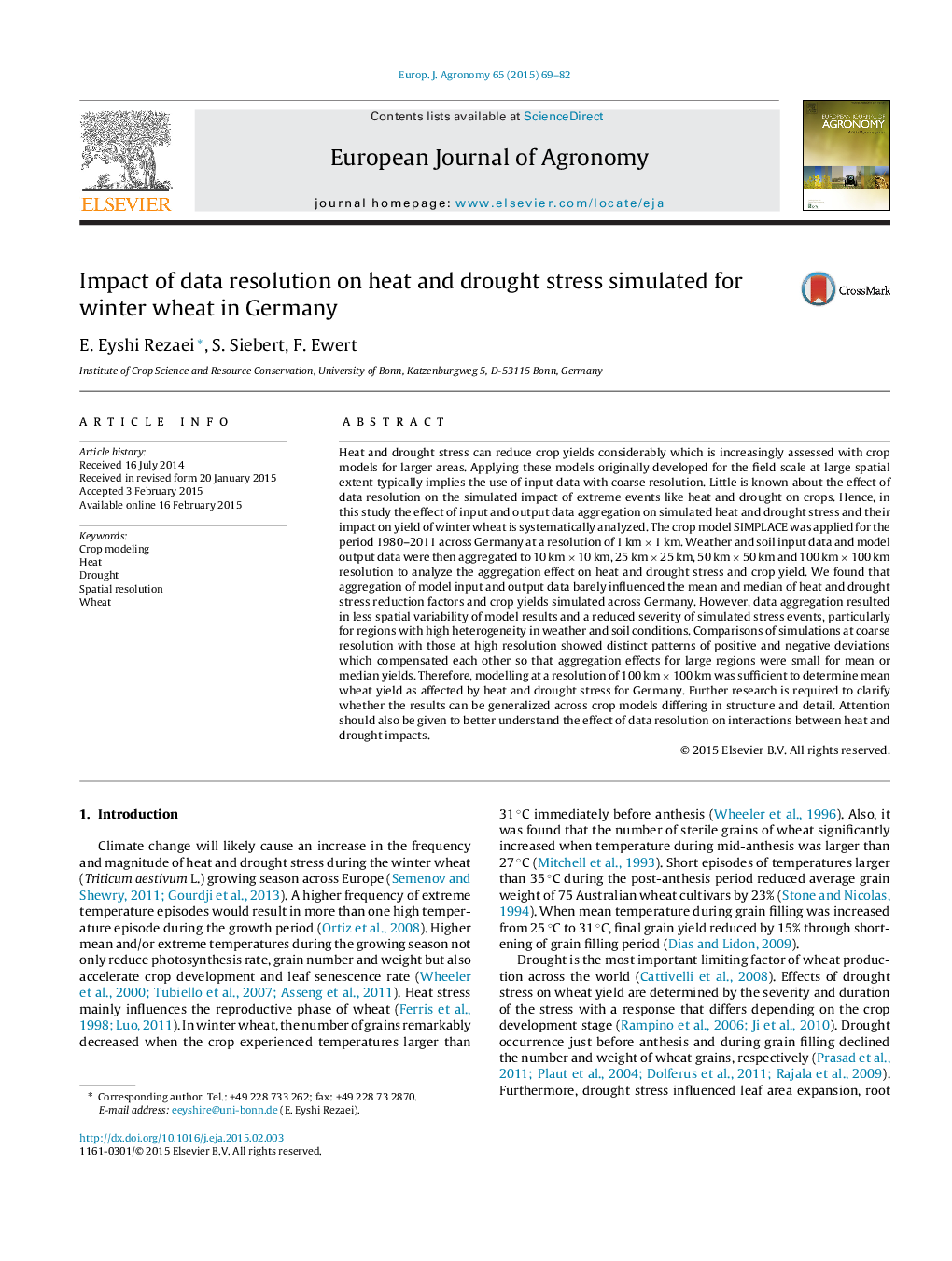| Article ID | Journal | Published Year | Pages | File Type |
|---|---|---|---|---|
| 4508885 | European Journal of Agronomy | 2015 | 14 Pages |
•No large difference were found between input and output aggregation approaches.•Variability of soil has higher impact on simulation results than variability of climate.•Data aggregation resulted in lower spatial variability of model results.•Mean stress effects across the country were not affected by data aggregation.
Heat and drought stress can reduce crop yields considerably which is increasingly assessed with crop models for larger areas. Applying these models originally developed for the field scale at large spatial extent typically implies the use of input data with coarse resolution. Little is known about the effect of data resolution on the simulated impact of extreme events like heat and drought on crops. Hence, in this study the effect of input and output data aggregation on simulated heat and drought stress and their impact on yield of winter wheat is systematically analyzed. The crop model SIMPLACE was applied for the period 1980–2011 across Germany at a resolution of 1 km × 1 km. Weather and soil input data and model output data were then aggregated to 10 km × 10 km, 25 km × 25 km, 50 km × 50 km and 100 km × 100 km resolution to analyze the aggregation effect on heat and drought stress and crop yield. We found that aggregation of model input and output data barely influenced the mean and median of heat and drought stress reduction factors and crop yields simulated across Germany. However, data aggregation resulted in less spatial variability of model results and a reduced severity of simulated stress events, particularly for regions with high heterogeneity in weather and soil conditions. Comparisons of simulations at coarse resolution with those at high resolution showed distinct patterns of positive and negative deviations which compensated each other so that aggregation effects for large regions were small for mean or median yields. Therefore, modelling at a resolution of 100 km × 100 km was sufficient to determine mean wheat yield as affected by heat and drought stress for Germany. Further research is required to clarify whether the results can be generalized across crop models differing in structure and detail. Attention should also be given to better understand the effect of data resolution on interactions between heat and drought impacts.
